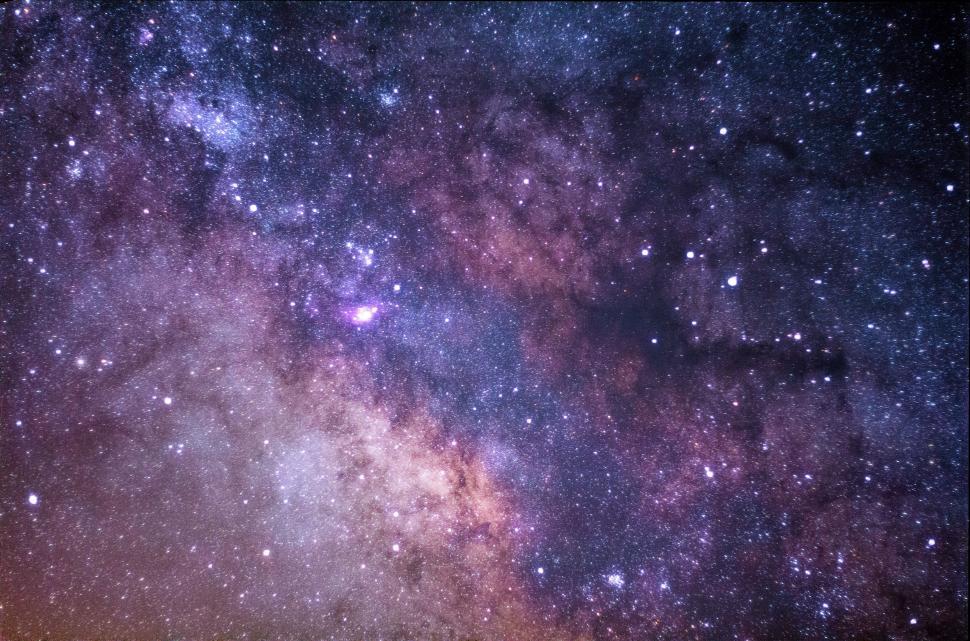
The vast expanse of the cosmos has always beckoned humanity, inspiring dreams of discovery and pushing the boundaries of what we thought possible. For over six decades, one agency has stood at the forefront of this grand endeavor: the National Aeronautics and Space Administration, better known as NASA. From its humble beginnings rooted in wartime aeronautical research to its current ambitious plans for deep space exploration, NASA has consistently embodied the spirit of innovation, collaboration, and relentless curiosity, fundamentally transforming our understanding of the universe and our place within it.
This article embarks on an extraordinary journey through NASA’s illustrious history, chronicling the pivotal moments, groundbreaking missions, and technological marvels that have defined its legacy. We will explore how this independent agency of the US federal government, responsible for the nation’s civil space program, has steered America’s space development effort towards peaceful applications in space science, leading most of America’s space exploration programs and maintaining an unparalleled influence on global culture and scientific advancement. Through its dedication, NASA has not only launched rockets and rovers but has also launched imaginations, inspiring generations to look up and wonder.
The narrative of NASA is one of triumphs and challenges, of audacious goals set against the backdrop of an evolving geopolitical landscape. It is a story woven with the threads of human ingenuity, scientific rigor, and an unyielding commitment to pushing the frontiers of knowledge. Join us as we recount the remarkable achievements that have etched NASA’s name into the annals of history, from the first human steps on the Moon to the intricate dance of international cooperation aboard orbital outposts, and the visionary probes venturing into the furthest reaches of our solar system.
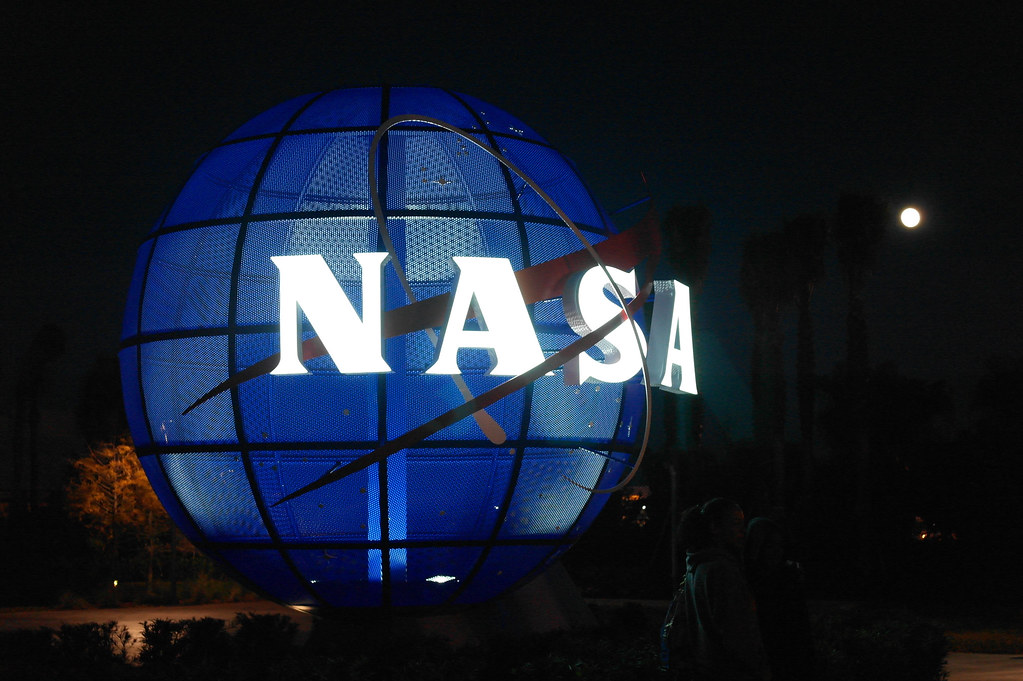
1. **The Foundation of NASA: From NACA to Civilian Space Leadership**The story of NASA is deeply intertwined with the quest for American leadership in aviation, tracing its roots back to the National Advisory Committee for Aeronautics (NACA). Recognizing that the United States lagged behind Europe in aviation capability by 1914, Congress moved decisively, establishing NACA in 1915 to foster aeronautical research and development. For over forty years, NACA meticulously conducted aeronautical research, providing crucial support to the US Air Force, US Army, US Navy, and the burgeoning civil aviation sector, laying the groundwork for future advancements.
NACA’s interests began to broaden significantly after World War II, as its researchers explored the revolutionary possibilities of guided missiles and supersonic aircraft. This period saw joint programs with the US Air Force, notably developing and testing the Bell X-1. Crucially, NACA’s rocketry program at the Pilotless Aircraft Research Division fostered a growing fascination with space, setting the stage for the dramatic shift that would soon redefine its purpose.
The Space Age was dramatically ushered in with the Soviet Union’s launch of Sputnik 1, igniting the fierce “Space Race.” In response to this pivotal moment, the Eisenhower Administration made a strategic decision to separate the United States’ military and civil spaceflight programs, previously consolidated under the Department of Defense’s Advanced Research Projects Agency. On July 29, 1958, the National Aeronautics and Space Act was signed, formally establishing NASA, which began its operations just a few months later on October 1, 1958.
This new agency was purposefully designed to give American space development a distinct civilian orientation, emphasizing peaceful applications in space science. NACA, with its 8,000 employees and three major research laboratories, formed the core of NASA’s new structure. NASA also absorbed critical assets like the Naval Research Laboratory’s Project Vanguard, the Army’s Jet Propulsion Laboratory (JPL), and the Army Ballistic Missile Agency under Wernher von Braun, firmly cementing its role as the nation’s civil space lead and the Air Force as the military space lead.
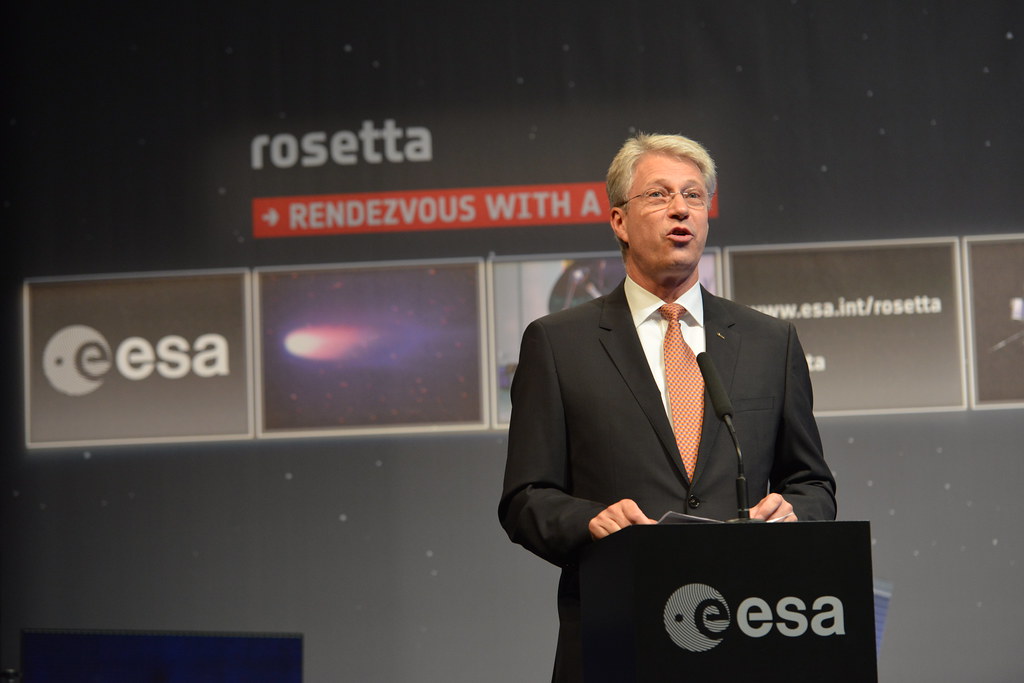
2. **Pioneering Human Spaceflight: Project Mercury’s Early Triumphs**The aspiration for human spaceflight predated NASA’s formal creation, with early plans taking shape within the US Armed Forces. Projects like the Air Force’s “Man in Space Soonest” and the Army’s “Project Adam” served as the foundation for what would become NASA’s first monumental human spaceflight program: Project Mercury. This ambitious endeavor aimed to orbit a human in space, develop crucial tracking and control systems, and identify the myriad issues associated with sending humans beyond Earth’s atmosphere.
To spearhead this program, NASA established the Space Task Group. Although NASA initially envisioned its first astronauts as civilians, President Eisenhower directed that they be selected from the military. This directive led to the selection of the legendary “Mercury 7” astronauts, a group comprising three Air Force pilots, three Navy aviators, and one Marine Corps pilot, who would become the faces of America’s nascent space program.
A significant milestone was achieved on May 5, 1961, when Alan Shepard became the first American to venture into space, undertaking a suborbital flight aboard the Freedom 7 capsule. This historic flight, though following the Soviet Yuri Gagarin’s orbital flight by less than a month, marked a crucial step for the United States. NASA’s first orbital spaceflight was successfully conducted by John Glenn on February 20, 1962, where he completed three full orbits of the Earth in the Friendship 7, even having to fly parts of his final two orbits manually due to an autopilot malfunction.
The Mercury program culminated in May 1963 with Gordon Cooper’s 22 orbits over 34 hours in the Faith 7, validating the program’s objectives. Project Mercury was universally acclaimed as a resounding success, achieving its core objectives to orbit a human in space, develop tracking and control systems, and identify other issues associated with human spaceflight, paving the way for more complex missions.
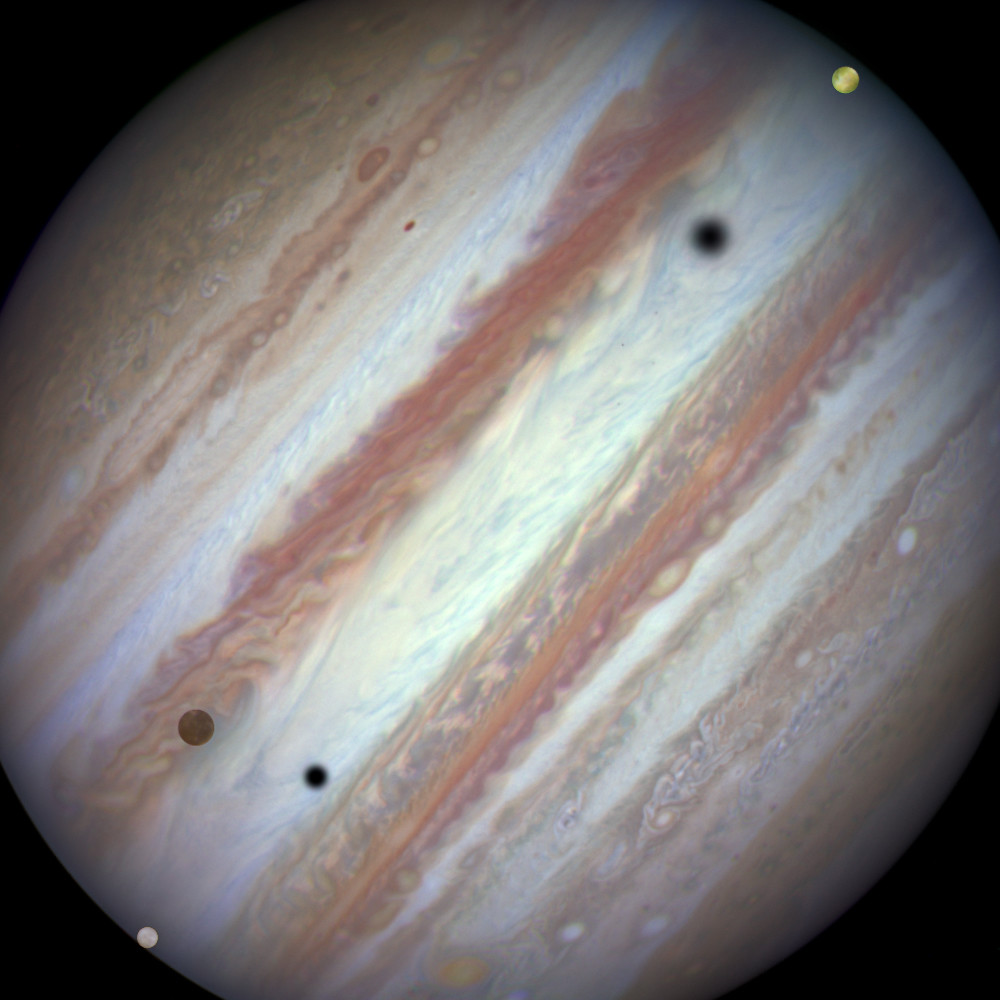
3. **The Race to the Moon: Project Gemini’s Crucial Steps**With the Mercury program successfully demonstrating humanity’s ability to survive in space, NASA’s focus quickly shifted towards an even more ambitious goal: landing an American on the Moon. This challenge was intensified by the escalating Cold War, prompting President John F. Kennedy to famously declare this audacious objective in his “Urgent National Needs” speech on May 25, 1961, affirming a national commitment to achieving this before the decade’s end. This monumental goal required a new, more advanced program to develop the necessary spaceflight skills and equipment.
To this end, NASA initiated Project Gemini, a vital intermediary step between Mercury’s foundational flights and Apollo’s lunar ambitions. Using a modified Air Force Titan II launch vehicle, the Gemini capsule was designed to accommodate two astronauts for missions lasting over two weeks. This marked a significant leap in capability, allowing for more extensive physiological and operational studies in preparation for longer duration lunar voyages.
Project Gemini was instrumental in pioneering several critical technologies and procedures essential for lunar missions. It introduced the use of fuel cells instead of traditional batteries, a power solution that would become standard for extended spaceflights. Crucially, Gemini missions conducted America’s first spacewalks, allowing astronauts to practice extravehicular activities (EVAs) vital for future tasks like repairing spacecraft or deploying scientific instruments outside the protective confines of the capsule.
Perhaps the most significant achievement of Project Gemini was the development and perfection of rendezvous and docking operations. Missions like Gemini 6 and Gemini 7 successfully demonstrated the ability to locate, approach, and link two spacecraft in orbit, a maneuver absolutely indispensable for the Apollo program’s lunar orbit rendezvous strategy. The invaluable experience gained from Gemini’s ten crewed flights proved to be an indispensable stepping stone towards the ultimate goal of a lunar landing.
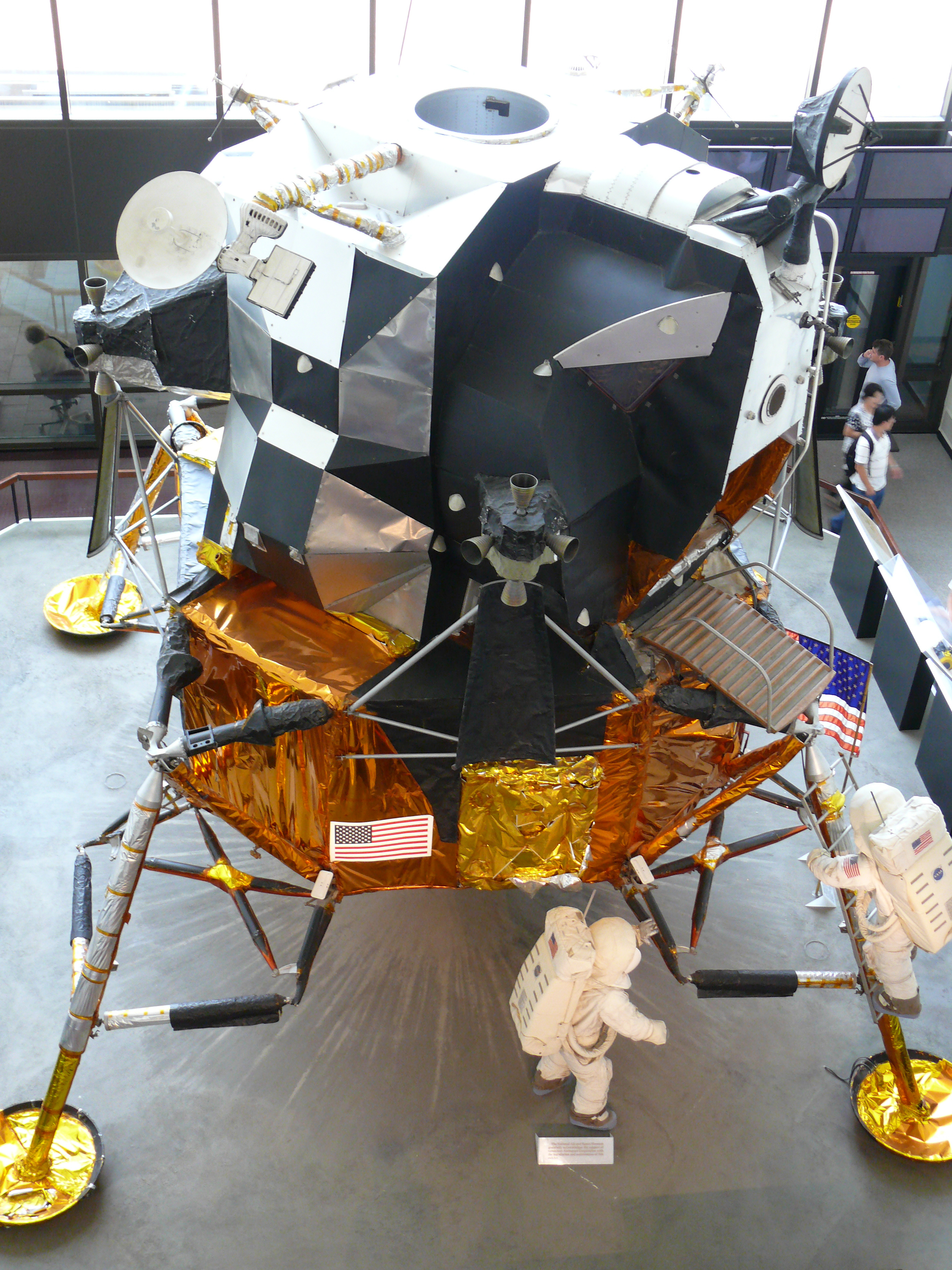
4. **Achieving the Impossible: The Apollo Program and Lunar Landings**President Kennedy’s bold declaration to land a man on the Moon by the end of the 1960s crystallized America’s space efforts into the iconic Apollo program, a monumental undertaking that would capture the world’s imagination. Despite early skepticism from figures like former President Dwight Eisenhower and 1964 presidential candidate Barry Goldwater, President Kennedy steadfastly protected NASA’s burgeoning budget. It was estimated that, at its height, 5% of Americans worked on some aspect of this colossal endeavor.
The Apollo program was an unprecedented feat of engineering and management, leveraging the expertise of thousands. Major General Samuel C. Phillips was assigned by the Air Force to direct the program. The mighty Saturn V rocket, essential for launching the Apollo spacecraft and Lunar Module, was developed by Wernher von Braun’s team at the Marshall Space Flight Center, derived from the Army Ballistic Missile Agency’s original Saturn I. North American Aviation designed and built the Apollo spacecraft, while Grumman was responsible for the intricate Apollo Lunar Module.
Before the ultimate lunar landing, several precursor robotic missions laid crucial groundwork. The Ranger Program, though initially plagued by failures, was an early response to Soviet lunar exploration. The Lunar Orbiter program, however, had greater success, mapping the Moon’s surface in preparation for Apollo landings, conducting meteoroid detection, and measuring radiation levels. The Surveyor program further tested uncrewed lunar landings and takeoffs, as well as taking surface and regolith observations that were indispensable for astronaut safety and mission planning.
Tragically, the program faced a severe setback with the Apollo 1 fire, which claimed the lives of three astronauts. However, the program persevered, implementing rigorous safety improvements. Apollo 8 then made history in December 1968, becoming the first crewed spacecraft to leave low Earth orbit and reach the Moon, orbiting it ten times on December 24 and 25. The three Apollo 8 astronauts were the first humans to see the Earth as a globe in space, the first to witness an Earthrise, and the first to see and manually photograph the far side of the Moon.
The culmination of these efforts arrived with Apollo 11. Commanded by Neil Armstrong with astronauts Buzz Aldrin and Michael Collins, this mission achieved the impossible on July 20, 1969. As Armstrong took “one small step for man, one giant leap for mankind,” he marked the end of the Space Race when the Soviet Union gave up its lunar ambitions. NASA would go on to conduct six total lunar landings, with Apollo 17 in 1972 bringing the program to a triumphant close, solidifying an unparalleled era of human exploration.

5. **Skylab: America’s First Orbital Outpost**Even as the Apollo program raced towards the Moon, visionaries like Wernher von Braun had long advocated for the development of a space station, recognizing its immense potential as a sustained platform for research. Following the triumphant conclusion of the Apollo lunar missions, this long-held aspiration materialized in 1973 with the launch of Skylab, America’s inaugural space station, carried aloft by the final launch of the Saturn V rocket.
Skylab was a remarkable demonstration of ingenuity and resourcefulness, extensively reusing Apollo and Saturn hardware. Its primary module was a repurposed Saturn V third stage, ingeniously converted into the main living and working area for the space station. This approach not only accelerated its development but also represented an efficient use of existing, proven technology.
The launch of Skylab was not without its dramatic challenges. The station sustained significant damage during its ascent, requiring daring spacewalks to be performed by the first crew to make it habitable and fully operational. These intricate repairs, performed by astronauts in the harsh vacuum of space, underscored the critical importance of extravehicular activity skills honed during Project Gemini and proved human adaptability in orbit.
During its operational lifetime, Skylab hosted nine missions, providing invaluable data on long-duration spaceflight, solar astronomy, and Earth resources. Astronauts conducted numerous scientific experiments and observations, proving the immense utility of a continuously crewed orbital laboratory. Though Skylab was decommissioned in 1974 and ultimately deorbited in 1979, two years prior to the first launch of the Space Shuttle and any possibility of boosting its orbit, it established a crucial precedent for future, more ambitious space stations.
Read more about: Charting the Cosmos: NASA’s Unparalleled Legacy in Space Exploration and Scientific Discovery
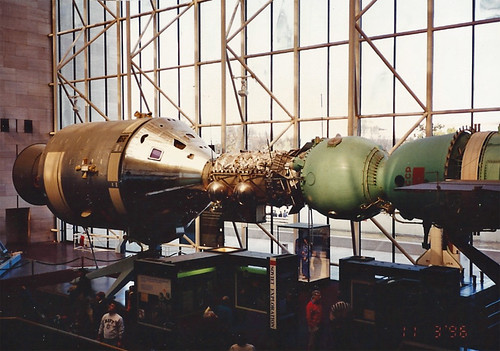
6. **Apollo-Soyuz: A Historic Handshake in Orbit**In the midst of the Cold War, a period marked by intense geopolitical rivalry and technological competition, NASA orchestrated a groundbreaking mission that transcended earthly divisions. The Apollo-Soyuz Test Project, flown in 1975, was not merely a technological achievement but a profound diplomatic triumph, marking the first-ever international spaceflight and a symbolic handshake between the two premier space powers, the United States and the Soviet Union.
This historic mission saw a US Apollo spacecraft, marking the last flight of the Apollo capsule, rendezvous and dock with a Soviet Soyuz capsule in Earth orbit. The meticulous planning and execution of this joint venture required unprecedented levels of cooperation and communication between engineers, scientists, and astronauts from both nations. They bridged language barriers and differing technical standards to achieve a common goal, showcasing the power of collaboration.
The Apollo-Soyuz mission symbolized a thawing in Cold War relations, demonstrating that collaboration was possible even between ideological adversaries. The image of American and Soviet astronauts shaking hands through an open hatch in space became an enduring icon of international goodwill and shared scientific endeavor. It offered a glimpse into a future where space exploration could be a shared human enterprise, rather than solely a competitive race.
Beyond its diplomatic significance, the technical lessons learned from this complex docking operation, particularly regarding compatible docking systems and rescue capabilities, would prove invaluable for future international space endeavors. It laid critical conceptual groundwork for multi-national space projects, most notably the International Space Station, which would eventually become a permanent beacon of global cooperation in orbit decades later.

7. **Charting the Inner Solar System: Mariner and Venus Missions**With the dramatic successes in human spaceflight and Earth orbit, NASA concurrently embarked on an ambitious program of robotic interplanetary exploration, seeking to unravel the mysteries of our Solar System. Starting in the 1960s, the Mariner program emerged as NASA’s flagship initiative for these distant voyages. These pioneering probes were meticulously designed to visit Earth’s nearest planetary neighbors, gathering invaluable data that would reshape our understanding of these worlds.
The Jet Propulsion Laboratory (JPL) quickly became the lead NASA center for these complex robotic interplanetary missions, overseeing the design, launch, and operation of these advanced spacecraft. Early Mariner missions successfully launched probes to Venus, Mars, and Mercury throughout the 1960s, making significant discoveries about the inner planets’ atmospheres, surfaces, and magnetic fields. Despite these early successes, congressional funding priorities shifted towards the Apollo program, leading NASA Administrator James Webb to temporarily suspend all future interplanetary probes to focus resources on the lunar goal.
Following the conclusion of the Apollo program, NASA reignited its space science program, with Venus often being the first target for renewed exploration due to its similar characteristics to Earth. The American Mariner 2 spacecraft was the first to successfully visit Venus, in the 1960s, revealing it to be an incredibly hot and inhospitable planet beneath its thick, cloudy atmosphere. This initial glimpse shattered earlier notions of Venus possibly harboring life.
Subsequent missions built upon these foundational discoveries. The Pioneer Venus project in the 1970s further delved into the planet’s atmospheric composition and structure. The Magellan spacecraft, which performed radar mapping of Venus’ surface in the 1980s and 1990s, utilized sophisticated radar technology to penetrate Venus’s dense cloud cover, unveiling a surface dominated by extensive volcanism and tectonic features. Though future missions often used Venus for flybys on their way to other destinations in the Solar System, these early efforts provided a comprehensive, if sobering, portrait of our sister planet.
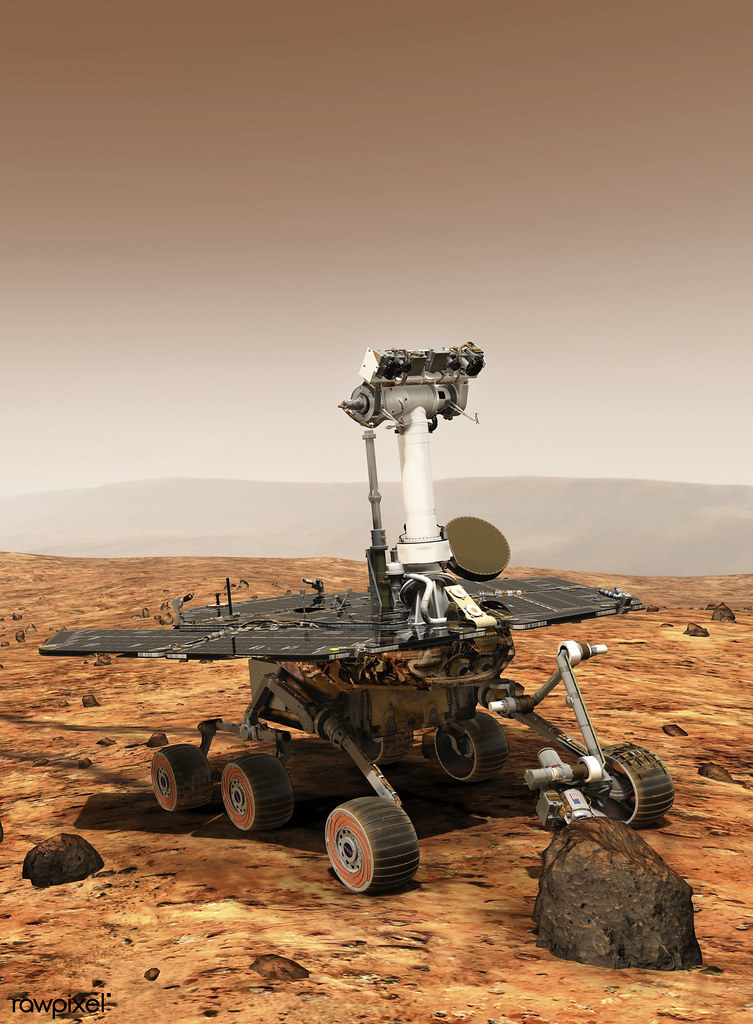
8. **Unveiling the Red Planet: NASA’s Extensive Mars Exploration**Mars, with its persistent allure and the tantalizing possibility of harboring past or present life, has long been a focal point for NASA’s robotic explorers. Following initial flybys by Mariner 5, 6, and 7, Mariner 9 achieved a significant milestone by becoming the first spacecraft to orbit Mars, providing a continuous, detailed view of the Red Planet’s dynamic surface and atmospheric phenomena, dramatically altering our perceptions of our planetary neighbor.
The quest for direct evidence of life intensified with the ambitious Viking program, launched in 1975, which successfully placed two landers on the Martian surface in 1976. These sophisticated probes conducted extensive biological experiments, analyzing soil samples for signs of microbial life, while their accompanying orbiters mapped the planet from above. Though the initial findings were ambiguous regarding extant life, Viking provided an unprecedented wealth of data on Martian geology, atmosphere, and surface conditions.
After a period, NASA reignited its Mars exploration with a new generation of spacecraft. The Mars Global Surveyor orbiter and Mars Pathfinder mission, deploying the pioneering Sojourner rover, arrived in 1996, marking the first time a mobile robotic explorer traversed the Martian landscape. The early 2000s saw the deployment of the 2001 Mars Odyssey orbiter, followed by the highly successful Spirit and Opportunity rovers in 2004, which spent years analyzing rocks and soil, uncovering compelling evidence of past water activity on Mars.
Subsequent missions continued to build upon this robust foundation. The Mars Reconnaissance Orbiter (2005) provided high-resolution imaging, while the Phoenix Mars lander (2007) excavated the planet’s polar regions, confirming the presence of water ice. In 2012, the Curiosity rover made groundbreaking discoveries, revealing that radiation levels on Mars were comparable to those on the International Space Station and identifying key chemical ingredients necessary for life, significantly increasing the potential for future human exploration.
The Mars Atmosphere and Volatile Evolution (MAVEN) mission, launched in 2013, has deepened our understanding of the Martian upper atmosphere, offering clues to how Mars lost much of its ancient water. More recently, the Interior exploration using Seismic Investigations Geodesy, and Heat Transport (InSight) mission, starting in 2018, meticulously studied the Martian interior. The latest marvel, the Perseverance rover, landed in 2021, carrying with it Ingenuity, the first extraplanetary aircraft, embarking on a new chapter in the enduring search for signs of ancient microbial life and paving the way for eventual human missions.

9. **Voyages to the Cosmic Frontier: Exploring the Outer Solar System and Beyond**Beyond the inner, rocky planets, NASA’s robotic probes embarked on audacious journeys to the frigid, distant realms of the outer Solar System, revealing the gas giants and their diverse moons in astonishing detail. The MESSENGER probe, launched in 2004, first visited Mercury, the innermost planet, demonstrating an innovative use of a solar sail before meticulously mapping its surface and exosphere, providing unprecedented insights into this unique world.
The 1970s marked a daring leap to the outer solar system. Pioneer 10 became the first probe to visit Jupiter, capturing invaluable data, while Pioneer 11 followed, providing the first close-up view of Saturn. Both probes achieved the incredible feat of becoming the first human-made objects to leave our solar system, carrying messages from Earth into interstellar space, destined for infinite cosmic wanderings.
Building on this trailblazing spirit, the Voyager program, launched in 1977, conducted spectacular flybys of Jupiter, Saturn, Uranus, and Neptune. These twin spacecraft utilized a rare planetary alignment to achieve a “grand tour” of the outer planets, transmitting breathtaking images and invaluable data that dramatically reshaped our understanding of these distant worlds, their ring systems, and their diverse moons, some of which were entirely new discoveries.
The Galileo spacecraft, spectacularly deployed from the Space Shuttle flight STS-34, achieved another first by becoming the initial spacecraft to orbit Jupiter. Its extensive mission revealed compelling evidence of subsurface oceans on Europa, a moon now considered a prime candidate for harboring extraterrestrial life, and observed that the moon may hold ice or liquid water beneath its icy shell, further fueling astrobiological interest.
An exemplary international collaboration, the Cassini–Huygens mission, a joint effort with the European Space Agency and the Italian Space Agency, was sent to Saturn. This extraordinary mission discovered three new moons and conducted a thorough study of Saturn’s system. The Huygens probe successfully descended onto Titan, Saturn’s largest moon, detecting evidence of liquid hydrocarbon lakes. Furthermore, Cassini found profound evidence of subsurface water oceans on Enceladus, cementing its status alongside Mars and Europa as a celestial body potentially capable of harboring life. Finally, launched in 2006, the New Horizons mission then provided humanity’s first intimate look at Pluto and the distant Kuiper Belt, expanding our cosmic horizons even further.
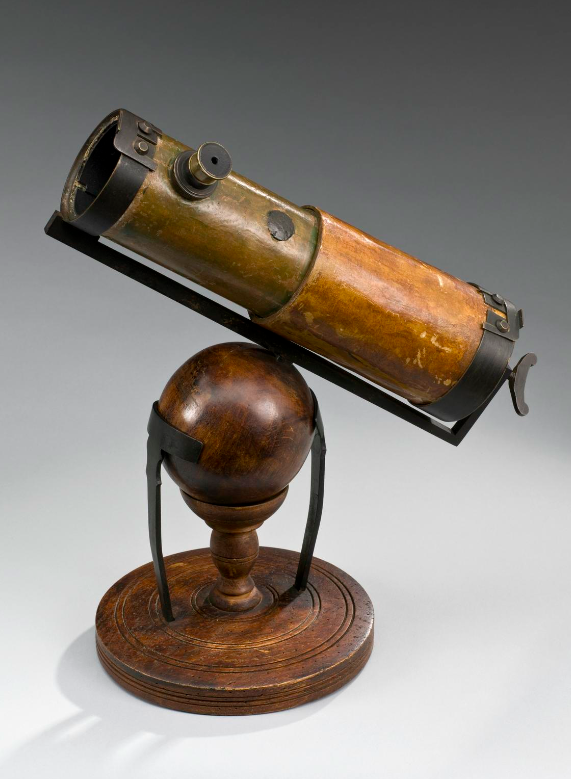
10. **Gazing into the Deep: Revolutionary Space Telescopes**Beyond the exploration of our Solar System, NASA’s vision extended to unraveling the grand tapestry of the cosmos itself, leading to the development and deployment of revolutionary space telescopes. The journey began in the 1960s with the Orbiting Astronomical Observatory (OAO) series, NASA’s inaugural orbital telescopes, which provided crucial ultraviolet, gamma-ray, x-ray, and infrared observations, opening new windows into astronomical phenomena previously obscured by Earth’s atmosphere. Building on this, the Uhuru satellite, launched later, became the first dedicated X-ray telescope, meticulously mapping 85% of the sky and dramatically increasing the known number of black holes.
The 1990s and early 2000s saw the launch of NASA’s ambitious Great Observatories program, featuring some of humanity’s most powerful telescopes. The Hubble Space Telescope, launched in 1990 by the Space Shuttle Discovery, could view galaxies 15 billion light-years away, offering unparalleled glimpses into the early universe. Despite an initial defect in its primary mirror, ingenious computer enhancements and five Space Shuttle servicing missions successfully restored its vision, transforming it into an icon of cosmic discovery.
The Compton Gamma Ray Observatory, launched from the Atlantis in 1991, made significant contributions by discovering a possible source of antimatter at the center of the Milky Way and observing that the majority of gamma-ray bursts originate outside our galaxy. In 1999, the Chandra X-ray Observatory, launched from the Columbia, provided critical observations of black holes, quasars, supernovae, and dark matter, offering profound insights into the Sagittarius A* black hole at the center of our Milky Way and the separation of dark and regular matter during galactic collisions.
The Spitzer Space Telescope, an infrared observatory launched in 2003, trailed Earth in its orbit around the Sun and famously discovered the existence of brown dwarf stars, bridging the gap between planets and true stars. Complementing these magnificent instruments, other telescopes like the Cosmic Background Explorer and the Wilkinson Microwave Anisotropy Probe provided compelling evidence supporting the Big Bang theory, solidifying our understanding of the universe’s origin and evolution.
Looking to the future, the James Webb Space Telescope, named after the NASA administrator who spearheaded the Apollo program, was launched in 2021 as a direct successor to Hubble. This infrared observatory is designed to observe the formation of the very first galaxies, peering back to the universe’s infancy. Furthermore, the Kepler space telescope, launched in 2009, embarked on a dedicated mission to identify planets orbiting extrasolar stars, particularly focusing on those that may be Terran and potentially harbor life, famously confirming Kepler-22b within its star’s habitable zone, fueling our imagination about worlds beyond our own.

11. **Monitoring Our Home Planet: Earth Observation Satellites**While much of NASA’s public acclaim stems from its ventures into deep space, a significant and equally vital part of its mission involves a profound dedication to understanding our own planet, Earth. This commitment materialized in the development of a suite of sophisticated Earth observation satellites, beginning with the pioneering Television Infrared Observation Satellite (TIROS) launched in 1960, which proudly became the world’s first weather satellite, revolutionizing meteorological forecasting and observation.
Building upon this initial success, NASA fostered crucial collaborations with other agencies to expand its Earth-centric capabilities. It cooperated extensively with the United States Weather Bureau on subsequent TIROS missions and the advanced second-generation Nimbus program of weather satellites. This partnership ensured continuous advancements in tracking atmospheric conditions and providing essential data for both civilian and military applications.
Further broadening its scope, NASA worked in tandem with the Environmental Science Services Administration on a series of specialized weather satellites, enhancing the nation’s ability to monitor and predict weather patterns. Concurrently, the agency launched its experimental Applications Technology Satellites into geosynchronous orbit, demonstrating the potential for continuous, real-time observation from a fixed point above the Earth, a capability that would become indispensable for future communications and monitoring systems.
The agency’s commitment to dedicated environmental monitoring was cemented with the launch of Landsat in 1972, NASA’s first satellite specifically designed for Earth observation. This landmark mission initiated a continuous, long-term record of changes to Earth’s land surface. This ongoing effort subsequently led to NASA and the National Oceanic and Atmospheric Administration (NOAA) jointly developing the Geostationary Operational Environmental Satellite (GOES) series and making critical discoveries about ozone depletion, underscoring NASA’s vital role in identifying and understanding global environmental challenges that impact life on Earth.
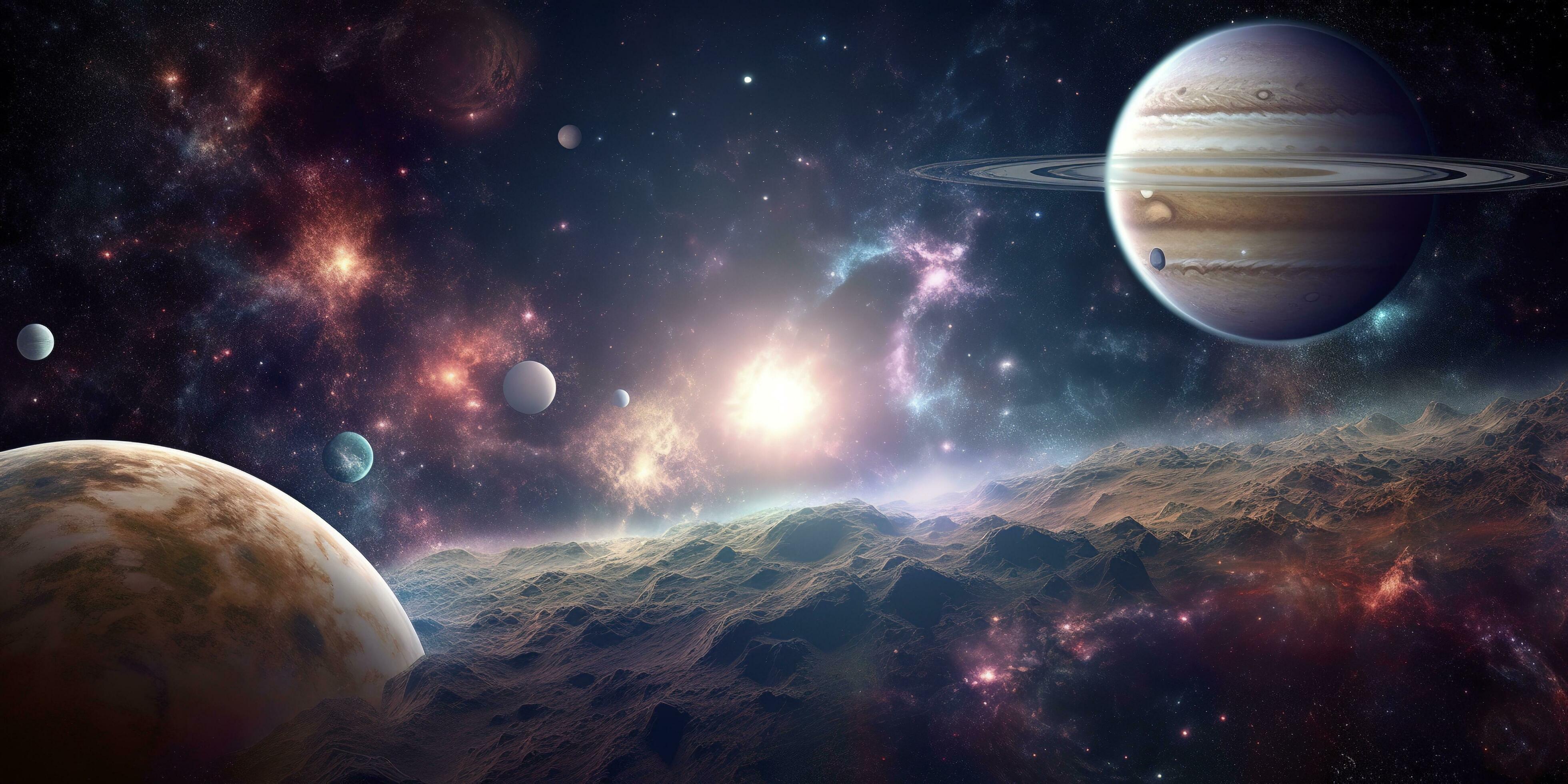
12. **The Space Shuttle Era: A New Age of Reusable Spaceflight**NASA’s dual mission in aeronautics and space culminated in one of its most ambitious and visually iconic programs: the Space Shuttle. Since the 1960s, the agency had been pursuing the development of a spaceplane, envisioning a reusable vehicle that could provide routine and economical logistical support to an orbiting space station, serving as a hub for future lunar and Mars missions, thereby ending the reliance on expensive, expendable boosters like the mighty Saturn V.
Official development of the Space Shuttle began in 1972. The Johnson Space Center was designated as the lead for the design, development, and manufacturing of the orbiter, while the Marshall Space Flight Center spearheaded the development of the launch system. The design was heavily informed by NASA’s series of lifting body aircraft, notably the joint NASA-US Air Force Martin Marietta X-24, which proved critical for understanding hypersonic flight. Rockwell International, Martin Marietta, and Morton Thiokol were contracted for the orbiter, external fuel tank, and solid rocket boosters, respectively, leading to the acquisition of six majestic orbiters: Enterprise, Columbia, Challenger, Discovery, Atlantis, and Endeavour.
The Space Shuttle program ushered in significant changes for NASA’s Astronaut Corps. While previous selections were predominantly military test pilots, the Shuttle’s scientific and logistical capabilities allowed NASA to recruit more non-military scientific and technical experts, a prime example being Sally Ride, who became the first American woman to fly in space on STS-7. This new selection process also fostered international collaboration by allowing NASA to accept exchange astronauts from allied nations, enriching the diversity and expertise of human spaceflight.
The first Space Shuttle flight, STS-1, occurred in 1981 with the Columbia, serving as a critical flight test for the new spaceplane. NASA envisioned the Shuttle replacing numerous expendable launch systems, both American and European. The European Space Agency’s Spacelab payload dramatically increased the scientific capabilities of Shuttle missions beyond anything NASA had previously accomplished. The Shuttle also broke new ground by launching NASA’s first commercial satellites on the STS-5 mission and, in 1984, performed the world’s first on-orbit satellite servicing mission, with Challenger capturing and repairing the malfunctioning Solar Maximum Mission satellite, showcasing unprecedented repair capabilities.
Despite its groundbreaking achievements, the Space Shuttle faced criticism for not being as reusable or cost-effective as initially advertised. A tragic setback occurred in 1986 with the Challenger disaster on the STS-51L mission, resulting in the loss of the spacecraft and all seven astronauts, grounding the fleet for 36 months and forcing commercial companies to revert to expendable launch vehicles. The program returned to flight with significant safety modifications. Following the collapse of the Soviet Union, the Shuttle-Mir program further cemented international cooperation, with Atlantis successfully docking with the Russian Mir space station in 1995. However, a second tragedy struck in 2003 with the Columbia disaster during reentry, leading to the eventual retirement of the Space Shuttle program in 2011, after it had completed the International Space Station’s assembly, marking the end of a transformative era in space exploration.

13. **A Global Endeavor: The International Space Station**Even after the deorbit of Skylab in 1979, NASA never abandoned the transformative idea of a permanent space station, recognizing its immense potential as an orbital laboratory and a strategic staging point for future missions to the Moon and Mars. The agency relentlessly lobbied politicians, finding a strong advocate in President Ronald Reagan, who, in a powerful 1984 speech, directed NASA to develop a permanently manned space station within a decade, declaring, “America has always been greatest when we dared to be great.”
In 1985, NASA proposed the ambitious Space Station Freedom, envisioned by both the agency and President Reagan as a grand international program. This initiative garnered support from thirteen countries, including European Space Agency member states, Canada, and Japan, which signed an international agreement to collaborate on its development. Despite internal concerns within NASA about potentially diluting its authority or sharing sensitive space technologies, the commitment to international partnership signaled a new era in space endeavors.
However, the Space Station Freedom faced considerable controversy, primarily centered on its escalating costs, leading to several redesigns in the early 1990s that stripped away many of its original functions. Despite calls for congressional termination, the program persevered, largely due to the substantial economic impact it had, creating 75,000 jobs across 39 states. By 1993, President Bill Clinton sought to significantly reduce NASA’s budget and directed further cost reductions, mandated the preservation of aerospace industry jobs, and crucially, insisted on the inclusion of Russia into the program, marking a pivotal diplomatic shift.
This directive culminated in the 1993 announcement that Space Station Freedom would be transformed into the International Space Station (ISS) through an agreement with the Russian Federation. This collaboration provided a vital infusion of American currency to Russia, helping maintain its space program and its status as a premier space power. While the United States undertook the majority of the ISS construction and launches, Russia, Canada, Japan, and the European Space Agency all contributed significant components, making it a truly global assembly of engineering marvels. Despite initial budget promises, costs continued to rise, requiring NASA to reallocate funds from other programs to keep the ISS solvent, ultimately reaching a total cost of $150 billion, with the US contributing two-thirds.
The ISS has been continuously occupied for over two decades, setting a new record for human presence in space and hosting astronauts and cosmonauts from 15 different nations. It stands as the largest artificial satellite in Earth orbit, visible to the eye. Today, Russian Soyuz, and American Dragon and Starliner spacecraft transport crews to and from the station, complemented by various uncrewed cargo vehicles. The ISS program is currently expected to continue its groundbreaking research and collaborative operations until 2030, after which this incredible testament to human ingenuity and international cooperation will be retired and safely de-orbited.
Read more about: From Garage Start-ups to Global Empires: Exploring the Hometowns and Journeys of America’s Automotive Billionaires

14. **Pioneering the Future: Commercial Space and the Artemis Program**The trajectory of NASA’s exploration continues to evolve, embracing new paradigms, particularly in the realm of commercial space partnerships and ambitious returns to deep space. Following the Space Shuttle Columbia disaster in 2003, President Bush initiated the Constellation program, intended to smoothly replace the Shuttle and expand human exploration beyond low Earth orbit, specifically aiming to return astronauts to the Moon. However, this program was later canceled by the Obama Administration amidst concerns about its direction and feasibility, prompting warnings from former astronauts about America’s potential decline as a leading space power without new human spaceflight capabilities.
The trajectory of NASA’s exploration continues to evolve, embracing new paradigms, particularly in the realm of commercial space partnerships and ambitious returns to deep space. Following the Space Shuttle Columbia disaster in 2003, President Bush initiated the Constellation program, intended to smoothly replace the Shuttle and expand human exploration beyond low Earth orbit, specifically aiming to return astronauts to the Moon. However, this program was later canceled by the Obama Administration amidst concerns about its direction and feasibility, prompting warnings from former astronauts about America’s potential decline as a leading space power without new human spaceflight capabilities.
Calls for expanding private sector involvement in space exploration had been voiced as early as the Reagan Administration, suggesting that NASA should not bear the entire burden internally. In the 1990s, NASA entered into an agreement with Lockheed Martin to develop the X-33 demonstrator of the VentureStar spaceplane, intended as a Space Shuttle replacement. Despite technical challenges leading to its cancellation in 2001, this marked a significant milestone as the first time a commercial space company directly invested substantial resources into spacecraft development. The emergence of space tourism, exemplified by Dennis Tito’s trip to the ISS, further challenged NASA’s traditional assumption that only governments would send people to space.
Advocates for this burgeoning commercial approach, including former astronaut Buzz Aldrin, argued that it would allow NASA to return to its core roots as a research and development agency, while commercial entities took on the operational responsibilities for space systems. This shift would free NASA to focus its efforts and resources entirely on deep space exploration, including the ambitious goals of returning humans to the Moon and eventually venturing to Mars. Embracing this philosophy, NASA’s Commercial Crew Program began by contracting cargo delivery to the International Space Station, culminating in the historic SpaceX Crew-1 mission, which successfully launched US astronauts on an American spacecraft from American soil for the first time since the Space Shuttle’s retirement, ending a decade of reliance on Russian vehicles.
Building on this renewed capability and vision, NASA announced the Artemis program in 2019, a bold initiative to return humans to the Moon and establish a permanent human presence there, laying the groundwork for future missions to Mars. This program is paired with the Artemis Accords, a series of bilateral agreements with partner nations, designed to establish rules of behavior and norms for space commercialization on the Moon, ensuring a responsible and cooperative framework for lunar exploration and resource utilization.
In 2023, NASA further solidified its future direction by establishing the Moon to Mars Program office, explicitly designed to oversee the myriad projects, mission architectures, and associated timelines relevant to both lunar and Mars exploration and scientific inquiry. This strategic alignment underscores NASA’s unwavering commitment to pushing the boundaries of human knowledge and presence deeper into the cosmos, continuing its extraordinary legacy of discovery, innovation, and inspiration for generations to come. The journey of exploration, with its grand challenges and boundless rewards, truly knows no end.



